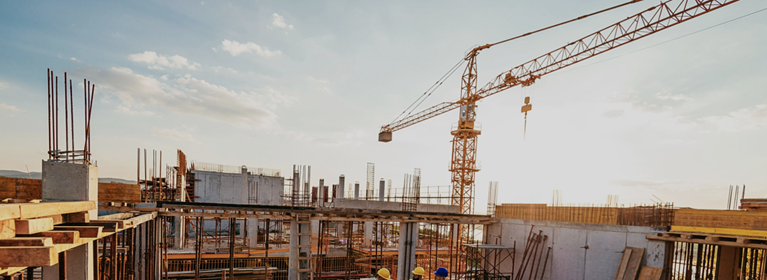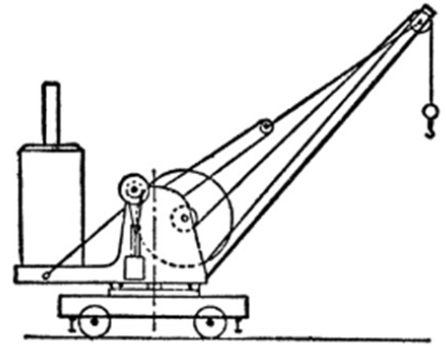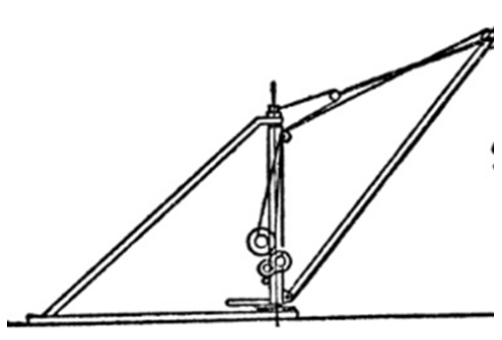
How to Tell the Difference Between a Crane and Derrick
By Columbus McKinnon | Jul 16, 2025
Understand the key differences between cranes and derricks for industrial lifting. Choose the right equipment with expert advice from Columbus McKinnon.
In lifting and rigging applications, the terms “crane” and “derrick” are often confused or used interchangeably. While both are designed to lift and move heavy loads, these two systems differ significantly in structure, mobility, and function. Understanding their distinctions is critical for choosing the right equipment for your operation.
At Columbus McKinnon, we’ve provided trusted lifting solutions — including cranes, hoists, and motion control systems — for over a century. Here’s how to tell the difference between a crane and a derrick and how to select the best option for your needs.
First let’s look at how OSHA defines them:
A crane is a machine for lifting and lowering a load and moving it horizontally, with the hoisting mechanism an integral part of the machine. Cranes, whether fixed or mobile, are driven manually or by power.
A "derrick" is an apparatus consisting of a mast or equivalent member held at the head by guys or braces, with or without a boom, for use with a hoisting mechanism and operating ropes.
OSHA often refers to these two lifting machines together.
ASME has a complete standard dedicated to Derricks:
ASME defines a “derrick” as an apparatus consisting of a mast or equivalent member held at the head by guys or braces, with or without a boom, for use with a winching mechanism and operating ropes. ASME B30.6 identifies 8 types of commonly used derricks and provides guidance on the construction, installation, operation, inspection, testing, and maintenance of these derricks.
If you look up regulations for cranes, they often include derricks, as they are both used for lifting and moving loads. Both have the capability to raise loads to a considerable height, so precautions and personnel qualifications are similar.
Cranes and derricks differ in how they are constructed and function.
What is a Crane?
 A crane is a machine equipped with hoisting mechanisms that can lift, lower, and move loads horizontally. Cranes may be fixed or mobile, and they can be driven either manually or powered by electricity, hydraulics, or pneumatics.
A crane is a machine equipped with hoisting mechanisms that can lift, lower, and move loads horizontally. Cranes may be fixed or mobile, and they can be driven either manually or powered by electricity, hydraulics, or pneumatics.
What is a Derrick?
 A derrick is a lifting apparatus typically consisting of a vertical mast and a boom that pivots to lift heavy loads vertically. Unlike cranes, derricks have limited horizontal movement and are generally stationary once installed.
A derrick is a lifting apparatus typically consisting of a vertical mast and a boom that pivots to lift heavy loads vertically. Unlike cranes, derricks have limited horizontal movement and are generally stationary once installed.
Structural components:
- A mast (vertical support)
- A boom (angled lifting arm)
- Guy wires or braces to secure the mast
- A hoisting system or pulley for lifting the load
Types of derricks include:
- Guy Derricks: Stabilized by cables anchored to the ground
- Stiffleg Derricks: Use rigid braces instead of cables
- Basket Derricks: Similar design but often lighter-duty
Key Differences: Crane vs Derrick
|
Feature |
Crane |
Derrick |
|
Mobility |
Mobile or fixed |
Stationary |
|
Structure |
Motorized system with runways and trolleys |
Mast + boom, guyed or braced |
|
Horizontal Movement |
Yes |
Limited or none |
|
Common Use |
Construction, manufacturing, warehousing |
Oil drilling, shipyards, long-term sites |
|
Operation |
Powered by motor/controls |
Manual or motorized hoisting |
|
CMCO Products |
Hoists, VFDs, radio controls, full crane kits, AC and DC control systems, brakes, automation solutions |
Wire rope hoists, actuators, controls |
Choosing the Right Equipment
Selecting between a crane and a derrick depends on:
- How much movement is needed
- Lifting capacity required
- Space constraints and mounting options
- Duration and frequency of use
- Environmental factors (indoor/outdoor, temperature, etc.)
Use a crane if you need:
- Repetitive lifting
- Horizontal movement
- Variable lifting points across a workspace
Use a derrick if your needs are:
- Vertical lifts in a fixed location
- Long-term lifting with minimal repositioning
- Space for guy wires or stiffleg mounting
Final Thoughts
While cranes and derricks both serve as lifting equipment, their differences are significant. Cranes offer more flexibility and mobility, making them ideal for dynamic or changing environments. Derricks, on the other hand, are well-suited for vertical lifts in fixed, heavy-duty applications like oil and gas drilling or marine construction.
With deep experience in hoisting, motion control, and rigging hardware, Columbus McKinnon helps engineers and facility managers select and build the right lifting system for their unique needs.
Contact our team today to customize a lifting solution for your operation.

 North America - EN
North America - EN
